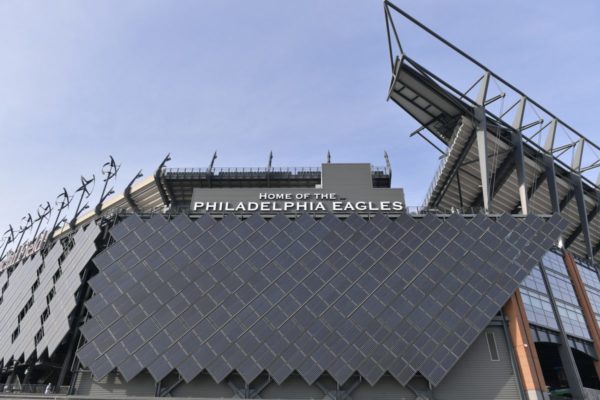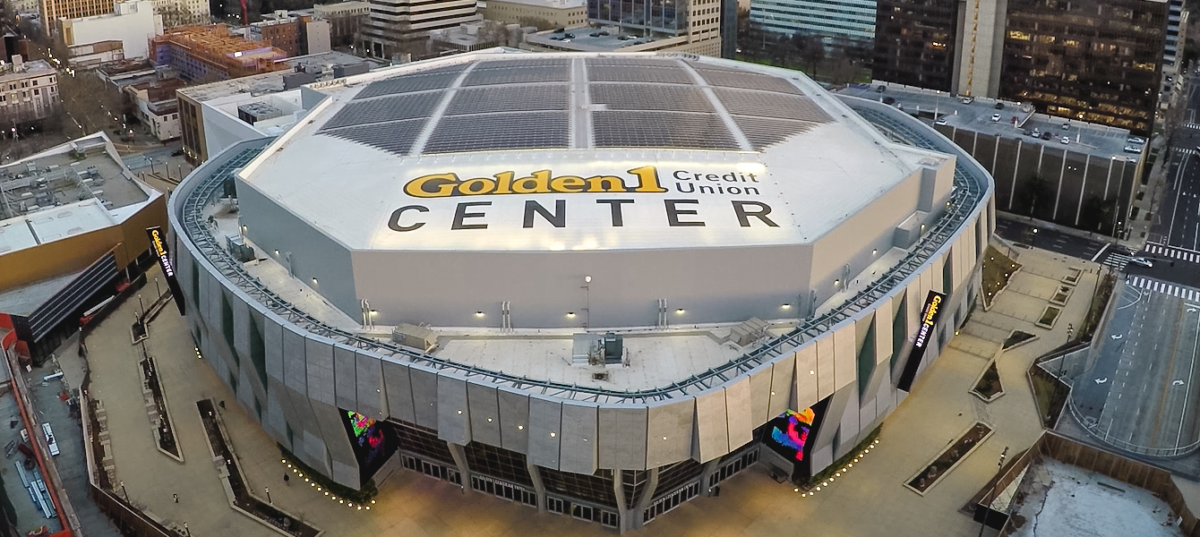This weekend, Super Bowl LVII takes place between the Kansas City Chiefs and the Philadelphia Eagles at the State Farm stadium in Phoenix, Arizona. Each year, the NFL and other sports leagues move closer towards covering their electricity usage with solar energy. The Solar Energy Industries Association (SEIA) tracks this clean energy progress.
Last year, over 40 million Americans attended a solar-powered sports event. If everyone watching the Super Bowl at home and at bars had rooftop solar, another 100 million solar-powered sports fan experiences would take place.
NFL stadiums lead the way with 32% of stadiums powered by onsite solar arrays, according to SEIA. The Major League Baseball (MLB) league and the National Basketball Association (NBA) utilize solar on 30% of their stadiums. Sports arenas are a big drag on the grid, with as much as 10 MW of electricity pulled every game. At the steep rate this author paid on his most recent electric bill of $0.39 per kWh, that would equate to $3.9 million per game in electricity costs alone. Owning solar assets offers a shield to ever-rising utility rates, both for homeowners and stadium owners alike.
SEIA offered a list of the five largest stadium solar installations across each major sports league. Where does your team rank?
5. FedEx Field
Home of the NFL’s Washington Commanders, Fedex Field sports a 2 MW array. An early adopter, the team installed more than 8,000 panels onsite, making the array one of the largest in the D.C. area. The system meets 20% of gameday operation needs and covers all of non-gameday power usage.
4. America First Field
Major League Soccer makes the list as Sandy, Utah’s America First Field ranks fourth with 2 MW of capacity installed. Home to Real Salt Lake, the stadium has 73% of its total energy consumption covered by the 6,423 panels installed on site. It is the largest solar array investment in Major League Soccer.
3. Capital One Arena
The Washington Capitals of the NHL and the NBA’s Washington Wizards both play at Capital One Arena, which purchases power from a 3.5 MW offsite installation in nearby Maryland. It ranks as the second-largest offsite procurement of renewable energy in U.S. sports.
2. Lincoln Financial Field

The Philadelphia Eagles are headed to the Super Bowl, and back home they have another accomplishment to be proud of. Nicknamed “The Linc,” Philadelphia’s football stadium has an 11,000 panel array packing in 4 MW of power capacity. The team is expected to save over $60 million over the life of the array, which covered about one-third of the stadium’s annual energy usage. It was installed in 2013, making the Eagles a pioneering solar sports team.
The Eagles run a live production tracker for those who are interested in seeing the system in operation.
1. Golden 1 Center
Taking the top spot by a good measure, the NBA’s Sacramento Kings stadium sports an 8.6 MW portfolio. The Golden 1 Center uses a mix of both onsite and offsite installations and represents 58% of the capacity installed at NBA arenas. It is the world’s first arena to be 100% solar powered year-round.
This content is protected by copyright and may not be reused. If you want to cooperate with us and would like to reuse some of our content, please contact: editors@pv-magazine.com.









By submitting this form you agree to pv magazine using your data for the purposes of publishing your comment.
Your personal data will only be disclosed or otherwise transmitted to third parties for the purposes of spam filtering or if this is necessary for technical maintenance of the website. Any other transfer to third parties will not take place unless this is justified on the basis of applicable data protection regulations or if pv magazine is legally obliged to do so.
You may revoke this consent at any time with effect for the future, in which case your personal data will be deleted immediately. Otherwise, your data will be deleted if pv magazine has processed your request or the purpose of data storage is fulfilled.
Further information on data privacy can be found in our Data Protection Policy.